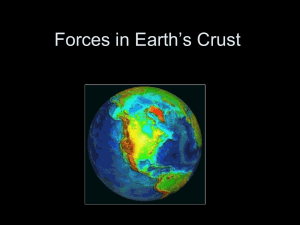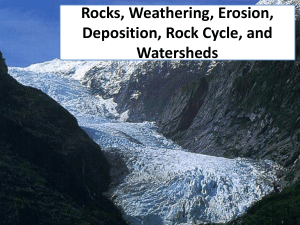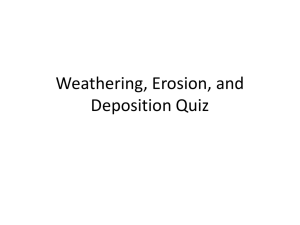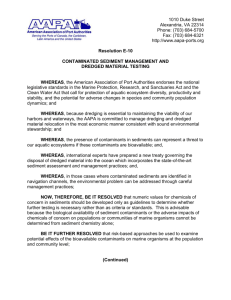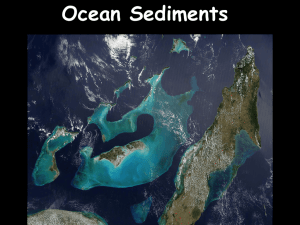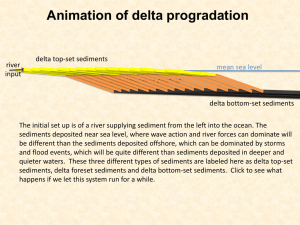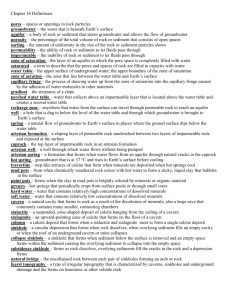WFS_Exercise1_Melosira
advertisement
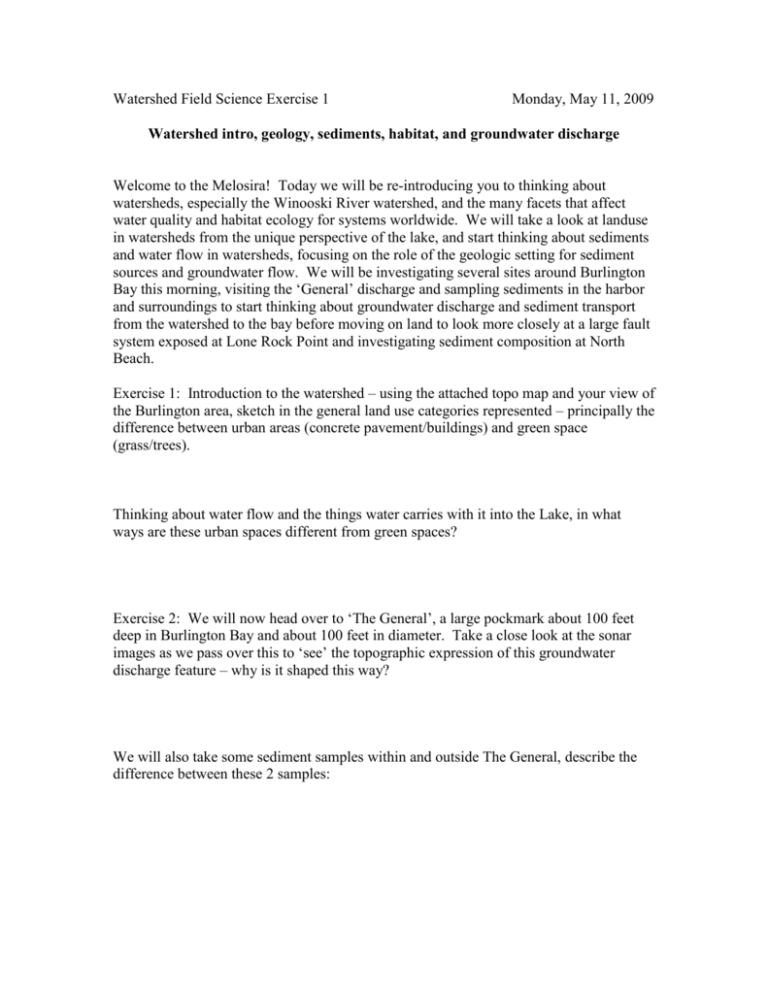
Watershed Field Science Exercise 1 Monday, May 11, 2009 Watershed intro, geology, sediments, habitat, and groundwater discharge Welcome to the Melosira! Today we will be re-introducing you to thinking about watersheds, especially the Winooski River watershed, and the many facets that affect water quality and habitat ecology for systems worldwide. We will take a look at landuse in watersheds from the unique perspective of the lake, and start thinking about sediments and water flow in watersheds, focusing on the role of the geologic setting for sediment sources and groundwater flow. We will be investigating several sites around Burlington Bay this morning, visiting the ‘General’ discharge and sampling sediments in the harbor and surroundings to start thinking about groundwater discharge and sediment transport from the watershed to the bay before moving on land to look more closely at a large fault system exposed at Lone Rock Point and investigating sediment composition at North Beach. Exercise 1: Introduction to the watershed – using the attached topo map and your view of the Burlington area, sketch in the general land use categories represented – principally the difference between urban areas (concrete pavement/buildings) and green space (grass/trees). Thinking about water flow and the things water carries with it into the Lake, in what ways are these urban spaces different from green spaces? Exercise 2: We will now head over to ‘The General’, a large pockmark about 100 feet deep in Burlington Bay and about 100 feet in diameter. Take a close look at the sonar images as we pass over this to ‘see’ the topographic expression of this groundwater discharge feature – why is it shaped this way? We will also take some sediment samples within and outside The General, describe the difference between these 2 samples: Exercise 3: Champlain Fault – we will travel now to Lone Rock Point, a famous example of a thrust fault. The rock above is older than the rock below the fault. Sketch the fault below and describe the direction of movement (we will take a much closer look this afternoon!) Exercise 4: We’ll now take a look at some of the sediments in Burlington Bay near the breakwater, not too far from the General Butler shipwreck. Check out the sonar scans as we pass over the wreck site. After we get a sample of the sediment, describe what you see (by eye and using the microscope on board): Exercise 5: Looking again at the sediments we collected at the 2 generals, what sort of organisms do you see here? How does the surrounding geology affect the habitat potentially available for organisms in these sediments? How does human use of watershed and waterfront affect the habitat for these organisms? Part II (On Land). A key part of this afternoon’s work will be to start thinking about how the geology of the surroundings (the composition of the rocks and sediments, faults and fractures that affect groundwater flow) are part of the watershed system. You have 2 maps as part of this – a bedrock geologic map describing the underlying (or exposed/outcropping) rocks, and a surficial geology map describing the sediments. Exercise 6: Having looked at ‘the General’ feature on the Melosira we will now take a closer look at the Champlain thrust at Lone Rock Point to see if they are connected. At Rock Point: Using your compass, try to measure the direction of the fault plane exposed at different parts of the outcrop. Also collect a sample of both the Iberville/Stony Point shale and the Dunham dolomite from the rock fall at the base of the outcrop, and collect a sample of sediment. Using this measurement of the fault plane, extend a straight line on your map across the bay. Does it interest the position of the General? You might note that the extension of this fault on your map (Map 1) does go into the bay, and that it is curved, in places missing, and in other places displaced by other faults. Now think about how your extension of the line as a straight feature would be affected by a change in topography (or bathymetry when we consider the lake depth) – does this shift the line to the east or the west? Exercise 7: Take a close look at the material within the fault plane of the Champlain Thrust and compare it to the same rocks just outside the fault plane. Describe what you see: Measure (best you can - it is an estimate) the density of fractures in this material (# per square inch). Water will flow in fractures – why do we not see much water flowing from these fractures if the General pockmark is such a big feature? Exercise 8: Materials. We’ll take a look at the rocks and minerals making up the material at Rock Point, North Beach sand, and some sediments collected in Stowe using hand lenses. You will use these small magnifiers to see some of the different minerals and rock fragments that make up each to get used to establishing differences related to the origin of a sediment. From the sand and soil samples, look for: Quartz – clear/white, irregular shape Feldspar – white to pink, rectangular Mica – clear to black, flaky and shiny Chlorite – green, irregular shape Describe the minerals and rock fragments you see along with something new (feel free to ask for help from Greg, Lydia, or other students!!): Let’s look at the surficial geology map (Map 2) and think about the sediment that is part of the immediate surroundings of this watershed system and where it may have come from. Describe 4 different ways in which these surficial sediments could have been deposited: Map 1 – Bedrock Geology map of the Burlington Area. Each color and 3-letter designation denotes a different geological unit (where first letter indicates the geological period); Orange Cdh is the Cambrian Dunham dolomite, light purple Osp is the Ordivician Stony Point shale; green Oib is the Ordivician Iberville shale; tan Cm is the Cambrian Monkton quartzite. The light red in Burlington denotes an urban area (concrete…) while the white, essentially blank stuff is alluvial cover (see the next map). Map 2 – Surficial Geology map of the Burlington Area. Each color and letter designation denotes a different sediment unit. Purple is artificial fill, light blue (mfs) is medium fine sand; turquoise is river deposited alluvium (al); light grey is glacial till (t); brown is medium coarse sand (mcs), and red is Champlain Sea clay (s-c).
